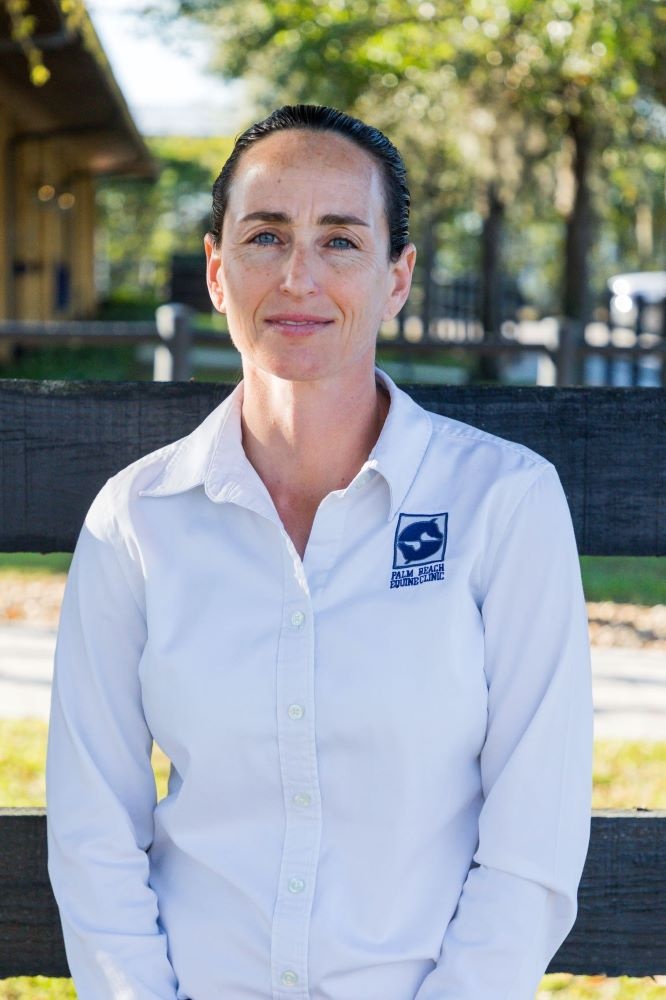The 411 on Equine Import and Export with Dr. Jordan Lewis
As more and more international-level sport horse competitions are brought to North America, the import and export of equine athletes overseas has increased significantly. Moreover, with the winter show season in Florida, horses from around the world are about to make a pilgrimage to South Florida.
Either for a purchase or regularly scheduled show-season travel, Dr. Jordan Lewis of Palm Beach Equine Clinic works with Florida state veterinarians to simplify the process of importing and exporting horses to and from international destinations.

Where to Begin
The transport process begins with obtaining travel documents, including an equine passport and health certificate, and organizing travel arrangements with a professional equine shipper. Once travel is organized, checking the horse’s health is suitable for traveling is always the top priority.
“The most important thing to have in order is health records, up-to-date vaccinations, and complete preventative care,” said Dr. Lewis. “Much of the testing upon import and export depends on the outbreaks of different diseases in the import and export countries. The requirements change year to year and even month to month.”
Dr. Lewis is one of the many veterinarians at Palm Beach Equine Clinic who helps owners navigate through the ever-changing import, export, and quarantine regulations.
Requirements Differ Depending on the Specific Import and Export Countries
“Most horses that are coming from Europe to the U.S. to compete in Florida fly into Miami and are placed in a two- or three-day U.S. Department of Agriculture (USDA) quarantine depending on the country they are arriving from,” said Dr. Lewis. “If they are arriving from South America, however, requirements are different and they will spend seven days at USDA in Miami.”
It is there that the most current regulations are upheld and tests are performed to rule out the presence of any threatening diseases.
When importing to the U.S., Dr. Lewis affirms that many tests are required through bloodwork, including equine infectious anaemia (EIA) or coggins; piroplasmosis, which is a tick-borne disease; glanders, a common bacterial disease; and dourine, a parasite-born venereal disease. When traveling from South America, horses are also tested for other parasites, such as screw worms. When exporting from the U.S., testing will vary based on the regulations of the destination country, its current health precautions and common parasites or diseases.
CEM Quarantine
Once the initial quarantine is complete, geldings are released into the general population, while stallions and mares are transitioned to Contagious equine metritis (CEM) quarantine at either a commercial or private quarantine facility.
CEM is a venereal disease in horses caused by bacteria and is only spread during breeding or through infected semen during artificial insemination. CEM quarantine is recommended for all horses entering the U.S. from Europe, but not necessary for those flying in from South America as the disease is not present in those countries.
According to Dr. Lewis, CEM quarantine takes about 15 days for mares and 35 to 40 days for stallions. Taking this into account, she recommends owners plan a month to complete the travel regulations for a mare and two months for a stallion. Horses that are continually showing obviously don’t have this time built into their travel schedules, and that is where waiver tents enter the equation.
Mares and stallions that bypass CEM quarantine are shipped in a sealed trailer to the competition facility where they enter quarantine in a waiver tent to keep them secure from the general horse population while competing.
If horses are admitted into a traditional CEM quarantine, veterinarians like Dr. Lewis perform the appropriate tests and cultures that clear a horse for approved release into a new home or to the event.
“We work very closely with state veterinarians to do all the blood draws and testing for imported horses, as well as stay on top of the requirements of export countries so each horse can easily and safely transition into the equine population,” said Lewis.
While requirements may change often, the ultimate goal of veterinarians like Dr. Lewis and her colleagues remains the same: releasing safe, healthy, and happy horses to travel into the U.S. and all countries around the world.
